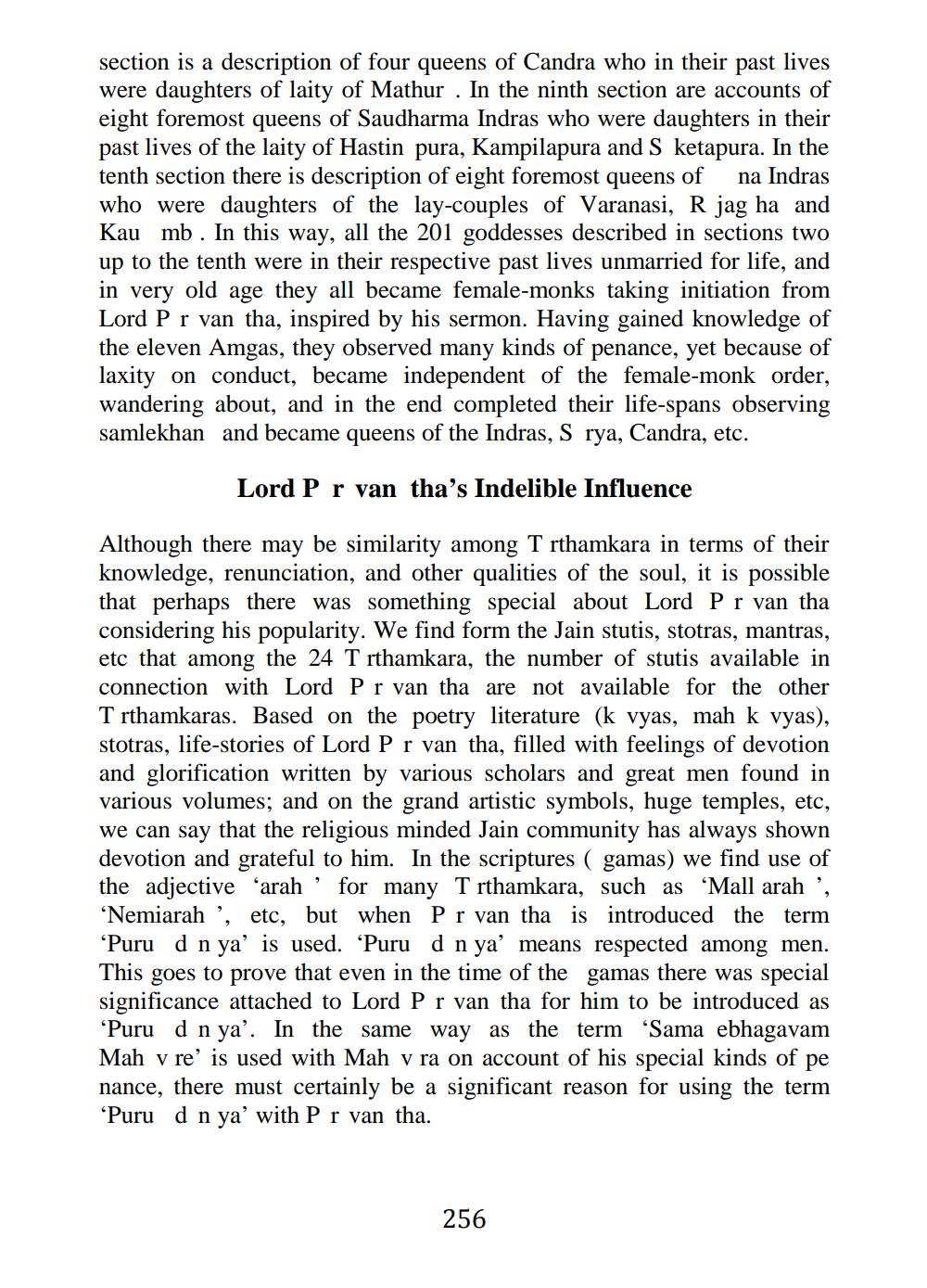________________
section is a description of four queens of Candra who in their past lives were daughters of laity of Mathur. In the ninth section are accounts of eight foremost queens of Saudharma Indras who were daughters in their past lives of the laity of Hastin pura, Kampilapura and S ketapura. In the tenth section there is description of eight foremost queens of na Indras who were daughters of the lay-couples of Varanasi, R jag ha and Kau mb. In this way, all the 201 goddesses described in sections two up to the tenth were in their respective past lives unmarried for life, and in very old age they all became female-monks taking initiation from Lord P r van tha, inspired by his sermon. Having gained knowledge of the eleven Amgas, they observed many kinds of penance, yet because of laxity on conduct, became independent of the female-monk order, wandering about, and in the end completed their life-spans observing samlekhan and became queens of the Indras, S rya, Candra, etc.
Lord P r van tha's Indelible Influence
Although there may be similarity among T rthamkara in terms of their knowledge, renunciation, and other qualities of the soul, it is possible that perhaps there was something special about Lord P r van tha considering his popularity. We find form the Jain stutis, stotras, mantras, etc that among the 24 T rthamkara, the number of stutis available in connection with Lord P r van tha are not available for the other T rthamkaras. Based on the poetry literature (k vyas, mah k vyas), stotras, life-stories of Lord P r van tha, filled with feelings of devotion and glorification written by various scholars and great men found in various volumes; and on the grand artistic symbols, huge temples, etc, we can say that the religious minded Jain community has always shown devotion and grateful to him. In the scriptures ( gamas) we find use of the adjective arah' for many T rthamkara, such as 'Mall arah, 'Nemiarah, etc, but when Pr van tha is introduced the term ‘Puru d n ya' is used. “Puru d n ya' means respected among men. This goes to prove that even in the time of the gamas there was special significance attached to Lord P r van tha for him to be introduced as
Puru d n ya'. In the same way as the term 'Sama ebhagavam Mah v re' is used with Mah v ra on account of his special kinds of pe nance, there must certainly be a significant reason for using the term 'Puru d n ya' with P r van tha.
256




